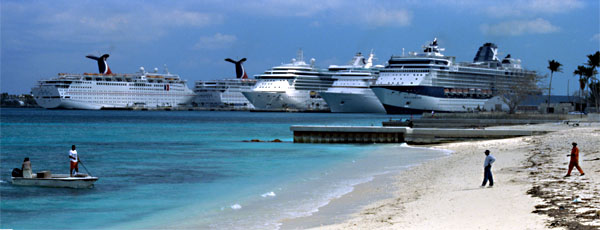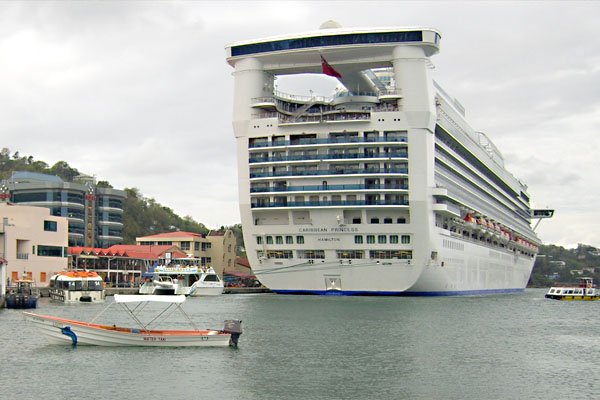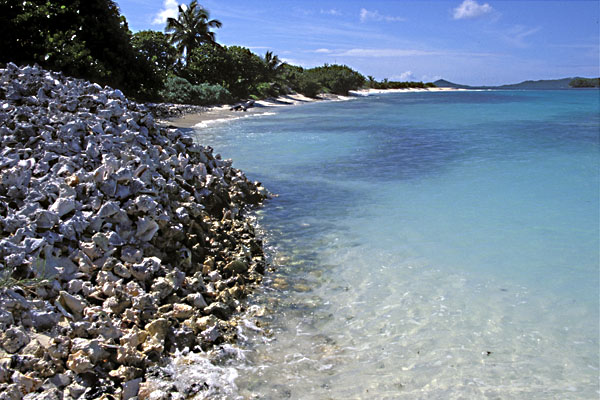|
What
Tourists Dislike | Pollution
Threatens Caribbean | Cruise Ship
Pollution
Cruise Ship Pollution
Cruise ships generate an astonishing amount of pollution, up to 25,000
gallons of sewage from toilets and 143,000 gallons of sewage from sinks,
galleys and showers each day. Currently, lax state and federal laws allow
cruise ships to dump untreated sewage from toilets once the ships is three
mile from shore. Within three miles, cruise ships can dump sewage from
toilets that has been treated, by marine sanitation devices which have
been shown to be inadequate. In addition, sewage from sinks and showers
can be dumped without treatment.
Five Things You Need to Know About Cruise Ship
Pollution
-
1. More than 30,000 gallons of treated human waste (or blackwater) are
flushed into the sea every day, causing bacterial growths and contaminating
fisheries.
-
2. Waste generated by laundries, showers, sinks and dishwashers (graywater)
is the biggest pollutant created by the industry; roughly 225,000 gallons
of gray water are treated and dumped into the ocean every day.
-
3. Roughly 75 to 80 percent of the trash generated aboard ships—including
glass, plastic bottles, cans, paper, cardboard and food waste, or about
two pounds of solid waste per passenger every day—is incinerated on board,
the ash dumped into the sea. The rest is taken back to port, but often
overwhelms local landfills... so it ends up dumped into the ocean.
-
4. A variety of toxic wastes are generated onboard, ranging from photo
processing to dry cleaning chemicals. In a perfect world, these chemicals
would be dumped only when the ships are docked. Unfortunately, it's definitely
an imperfect world.
-
5. Bilge water is a mix of seawater and oil from routine maintenance, which
ends up collecting at the bottom of the ship. An average ship generates
eight tons of the oily combo every day. While it is supposed to be stored
and dumped onshore, a number of cruisers have been caught dumping it at
sea.
- 6. One cruise ship emits as much exhaust gases as 5,000,000 cars!
Cruise Ships in the Grenadines
The newest Cruise Ship has space for 4000 passengers. Some islands
are visited by up to 6 cruise ships at once. Some cruise ships anchor in
The Grenadines and bring passengers with tender boats to the small uninhabited
islands. Tonns of discarded conch shells are evidence of mass tourism on
the vulnerable islands.
How 16 ships create as much pollution as all the cars in the world
Cruise liners, ferries, container ships, oil tankers and even
tugboats pump out killer chemicals linked to thousands of deaths
because of the filthy fuel they use. It looks foul, and leaves a brown
haze across ports and shipping lanes. But what hasn’t been clear
until now is that it is also a major killer, probably causing thousands
of deaths in Britain alone. This pollution could kill as many as a
million more people in the coming decade – even though a simple
change in the rules could stop it.
As ships get bigger, the pollution is getting worse. The most staggering
statistic of all is that just 16 of the world’s largest ships can
produce as much lung-clogging sulphur pollution as all the world’s cars.
Because of their colossal engines, each as heavy as a
small ship, these super-vessels use as much fuel as small power
stations. But, unlike power stations or cars, they can burn the
cheapest, filthiest, high-sulphur fuel: the thick residues left behind
in refineries after the lighter liquids have been taken. The
marine heavy fuel, or ‘bunker fuel’, leaves behind a
trail of potentially lethal chemicals: sulphur and smoke that have been
linked to breathing problems, inflammation, cancer and heart disease.
Bunker fuel is also
thick with sulphur. IMO rules allow ships to burn fuel containing up to
4.5 per cent sulphur. That is 4,500 times more than is allowed in car
fuel in
the European Union. The sulphur comes out of ship funnels as tiny particles, and it is these that get deep into lungs. Thanks
to the IMO’s rules, the largest ships can each emit as much as 5,000
tons of sulphur in a year – the same as 50million typical cars, each
emitting an average of 100 grams of sulphur a year.
There are now an estimated 100,000 ships
on the seas, and the fleet is growing fast as goods are ferried in vast
quantities from Asian industrial powerhouses to consumers in Europe and
North America. With
an estimated 800million cars driving around the planet, that means 16
super-ships can emit as much sulphur as the world fleet of cars.
[Oceana.org, www.dailymail.co.uk, TakePart.com]
= STRIEWA 2010 =

Bahamas: Thousands of Cruise Ship Passengers at once.

Saint Lucia: Higher than the tallest buildings.

Grenadines: The tourists like lobsters.

Grenadines: Piles of discarded conch shells litter the beaches.

Grenadines: Single conch shell.
What Tourists
Dislike | Pollution
Threatens Caribbean | Cruise Ship
Pollution
|

